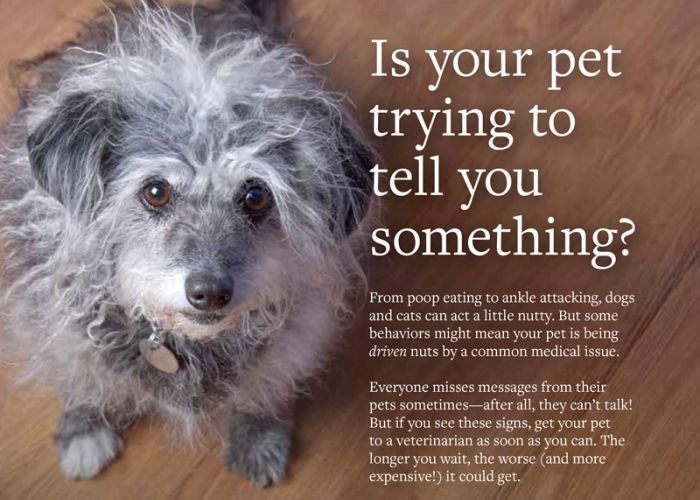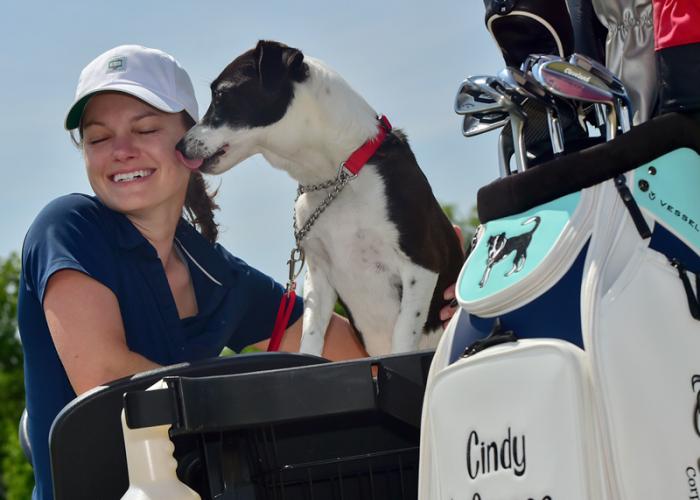Canine and feline parvovirus: What you need to know
Exploring the myths, finding the facts

Download a printable fact sheet version of this article.
Note: This article was updated in May 2025 to reflect new vaccination recommendations for neonatal puppies and kittens with meaningful risk of exposure.
Many pet owners and some veterinary professionals are increasingly concerned about the risk of overvaccination, and are choosing to vaccinate owned animals less frequently—or even not to vaccinate at all. Indeed, the American Veterinary Medical Association’s panleukopenia handout (2010) boldly announces, “In the past, feline panleukopenia was a leading cause of death in cats. Today, it is an uncommon disease, due in large part to the availability and use of very effective vaccines.”
While it is true that both feline panleukopenia virus (FPV) and its close corollary canine parvovirus (CPV) are “antigenically stable”—meaning they don’t change rapidly the way flu and other viruses do, thus allowing vaccines to remain very effective—animals in shelters across the country are still losing their lives daily to these diseases. CPV and FPV are not new diseases, and yet shelter outbreaks still frequently make headlines, shelter medicine consultations focus on these pathogens, and much misinformation abounds, both inside and outside the shelter walls.
In addition to busting the myth that FPV and CPV are uncommon, this article will address some frequent misconceptions about these diseases, aiming to help you limit further loss of animal lives in your community and in your shelter.
Myth: You can tell just by looking at animals if they’re infectious.
It would be wonderful if this were true. Unfortunately, the epidemiology of parvoviruses makes things more complex. Luckily, both CPV and FPV behave quite similarly, largely due to canine parvovirus having likely evolved from FPV in the 1970s. Both diseases have an average incubation period (the time from exposure to onset of clinical signs) that’s typically between four to seven days, but can extend up to two weeks in some animals. The shedding period (when virus is being excreted and is transmissible) often begins before clinical signs are obvious, and continues for a period after clinical recovery. On average, shedding occurs for less than three weeks after clinical recovery, with no carrier status existing in either disease. With parvoviruses, animals are typically infectious during incubation and before clinical signs become evident. This means that it can be very hard to know just by looking which animals are healthy and which are infectious. This is the reason that animals can enter or leave the shelter appearing healthy, and yet go on to become sick or spread illness. This concept is very important when it comes to implementing outbreak control measures and is further illustrated in the four charts in the images above.
Myth: Parvo has a very distinct smell. This allows cases to be confirmed.
Many people think that parvoviruses create a unique diagnostic smell in symptomatic animals. Parvoviruses target rapidly dividing cells such as those in the bone marrow and those that line the intestines. After exposure, the virus replicates first in lymph tissue, then spreads in the bloodstream and the intestinal tract by day four to seven. Bloody enteritis, vomiting, and low white cell counts develop, which can lead to secondary bacterial infection. These signs are hallmarks of both diseases and lead to the characteristic smell.
However, animals can develop identical symptoms from many other causes, including some bacteria and parasites. Prompt diagnostic testing is the only way to confirm a parvo diagnosis, and early recognition and response to infected animals in the population remains one of the key tools shelters have for limiting widespread outbreaks. While not every case will show obvious signs, clinical signs like diarrhea and vomiting—especially in a puppy or kitten—should lead to diagnostic testing.
Myth: Testing every canine on intake is the best way to prevent parvo in a shelter.
The ELISA (enzyme linked immunosorbent assay) test that detects viral antigen in fecal material is one of the most common tests shelters use. These bedside kits have good utility, and high sensitivity and specificity when used on symptomatic animals or dogs/pups from a high-risk situation. Because viral shedding can occur a few days before clinical signs appear, it can be helpful to test very high-risk puppies, such as littermates of a clinically ill animal or puppies from a known high-risk location, even if they are showing no overt signs of infection. However, the rate of false positive results is likely to increase when testing is performed on animals without clinical signs or who have not come from a high-risk situation. Testing every canine on intake is a resource-intensive strategy, will likely result in incorrect results, and is not recommended as a routine method of control.
Myth: If an animal has been recently vaccinated and tests positive on the parvo antigen test, the result is likely a false positive.
Perhaps more than any other myth, this idea perpetuated in shelters needs to shift. Ignoring a positive result in a clinical animal because of a recent vaccine could have drastic consequences. The parvo antigen test, like any test, is not perfect—but it does have great utility in the shelter. Did you know it can be used for either FPV or CPV? False positive results are possible, but seem quite rare [when the test is used correctly in a symptomatic or exposed animal] based on studies and empirical evidence. One study on panleukopenia tests indicated that the rate of false-positive results post-vaccination varied depending on which brand of test was used. In this study, false positive results were found least often with the IDEXX brand test, and the false-positive result was always a weak positive on the test, as opposed to a strong positive.
Also remember that animals can test falsely negative on this test if they’re shedding small quantities of antigen in the early or later phases of illness. Additional test methodologies can confirm parvovirus infection. A complete blood count or blood smear evaluating white cell counts can be done in-house in many shelters, or sent out for a nominal fee. Polymerase chain reaction (PCR) can be used to detect nucleic acids. These tests are highly sensitive, specific, and rapid, but can be difficult to interpret when vaccination is recent. Antibody titer levels can be assessed. Finally, necropsy and histopathology have value any time animals are dying.
Bottom line? An animal’s history and clinical signs must always be interpreted in conjunction with test results. Positive and/or negative antigen test results in a shelter animal should prompt further steps and may warrant isolation and/or other testing to best protect the rest of the shelter population.
Myth: New strains of parvovirus are harder to diagnose and treat.
Although CPV is not a virus that is considered to be rapidly changing, there are currently three genetic strains recognized. The first CPV strain (CPV-2) was reported in the 1970s and quickly spread worldwide. Vaccines were introduced fairly rapidly and slowed the spread of disease. The newest genetic variant is known as CPV-2c. This strain was first identified in dogs in Italy in 2000, and by 2007, had spread through more than half of the U.S. This sounds frightening, but each of the variants differs from the original CPV-2 by a single amino acid variation, making the variants almost 99 percent genetically identical. There have been suggestions that CPV-2c presents challenges in terms of virulence, diagnostic testing, or vaccine efficacy—but so far, studies have shown that current vaccine products as well as diagnostic tests function similarly with CPV- 2c as with the other variants.
Myth: Leaving an area or cage empty for a period of time will help eradicate the virus.
Both FPV and CPV are unenveloped DNA viruses. They are very durable and can persist in the environment for months to years without adequate sanitation. Sanitation is a two-step process that involves physical cleaning followed by chemical disinfection. Additionally, only a few disinfectants—such as bleach derivatives, potassium peroxymonosulfate, and accelerated hydrogen peroxide products—reliably kill parvoviruses. Shelters sometimes elect to leave areas empty after an infectious animal has been present. While repeated cleaning and disinfecting can be helpful, especially in older facilities where the environment may present a challenge to clean, three thorough sanitations in one day is just as effective as three times in three days. If space is at a premium, as it is in most shelters, there is no great benefit to leaving cages empty. One would need to leave the area sitting for months to years!
Myth: Only puppies and kittens are affected. Adult animals will not contract CPV or FPV.
Parvoviruses do primarily affect kittens and puppies, but cats and dogs of any age can be affected if they are unvaccinated or haven’t previously been exposed. Studies have shown that shelters take in a greater percentage than vet clinics of adult animals without prior protective immunity (either natural exposure or vaccination) against panleukopenia or parvovirus, and it is not unusual for adult animals to be affected during shelter outbreaks. This is why vaccination on intake is such a crucial tool in limiting disease. Panels of experts agree that unless their medical histories are provided, adult animals should be vaccinated at, or before, shelter intake with a modified live FVRCP or Da2PP vaccine [and boostered with a second dose two weeks after the first vaccine]. In young shelter animals, vaccines begin at 4-6* weeks of age and continue every two to three weeks until 18-20 weeks of age, when maternal antibody wanes.
*[Shelter medicine experts now recommend vaccinating neonatal puppies and kittens in communities or shelters where there's significant risk of exposure. Studies of animals coming into shelters across the country show only about a third of adult dogs and cats have antibodies to CPV or FPV. Intact animals are less likely to have protective antibodies. This means that many neonatal puppies and kittens entering shelters are likely to be born to mothers without protective antibodies to pass down to their babies. Vaccinating early allows these neonates the chance to develop antibodies that could protect them from severe disease and possible death if exposed to CPV or FPV.]
Myth: Giving puppies or kittens at least two or three vaccines will increase their protection against disease. “High titer” vaccines are best for CPV.
The term “high titer” refers to the amount of virus in each dose of vaccine. High titer vaccines were introduced in the mid-1990s for CPV. Now, virtually all commercially available modified live vaccines are considered high titer. While it is commonly thought that a certain number of vaccines are required to achieve immunity, the number of vaccines has little to do with protection status. Instead, vaccines must be given at the precise time when maternal antibody has waned. This varies in each individual animal [with some animals never having received any maternal antibodies]. In the shelter, the goal is to vaccinate frequently [to catch the time when maternal antibodies wane and the animal's immune system can respond to make antibodies. Many animals may never receive maternal antibodies and will be at risk until vaccinated.] Thus, vaccines should be given at intervals of two to three weeks, no more frequently than every two weeks. Ideally, young animals should not be held in high-risk environments at all. Foster homes or adopting out of the shelter are much safer options than waiting for a certain number of vaccines to be administered. Waiting in the shelter for two or three vaccines does not equate with protection against parvo or panleukopenia. In fact, in many shelters, this strategy may be more likely to allow exposure to illness. It is not two or three vaccines that will be protective—it is one vaccine at the precise time that an individual animal’s maternal antibody wanes [and when the immune system can respond to make long-lasting antibodies].
Myth: If a shelter is experiencing a parvo outbreak, to avoid negative publicity, a shelter should manage it internally and not alert the public.
Shelters are the proverbial canary in the coalmine for their communities. CPV and FPV are not yet diseases of the past, and it is important that shelters openly share this information with their communities. Many shelters are beginning to track the location, through cross-streets and ZIP codes, of animals who either enter the shelter sick or become ill during shelter stays. Over time, this information can be mapped through systems like GIS (geographical information systems) to chart high-risk pockets in a community. From there, targeted vaccination clinics can improve immunity in those locations, decreasing disease rates and possibly shelter intake as a whole. Shelters are also increasingly collaborating with local veterinary medical associations, when disease strikes, to spread the word to the veterinary community, which can then notify clients of the need to ensure that their pets’ vaccines are up to date. Targeted application of the tools available in all spectrums of veterinary medicine can play a role in continuing to make these diseases a threat of the past.






